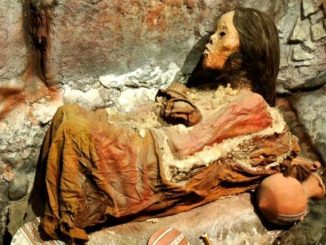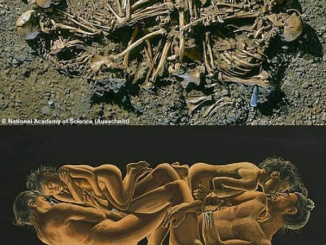A Window into Ancient Rituals
Nestled within the sacred ruins near Lima, Peru, the ancient settlement of Pachacamac holds stories of a civilization that once thrived with culture, religion, and remarkable rituals. Among these stories is a discovery that captivates historians and archaeologists alike: the mummy of a woman, believed to have been around 50 years old at the time of her ceremonial burial. This discovery not only sheds light on the burial practices of the time but also offers insights into the social and cultural aspects of life in Pachacamac.
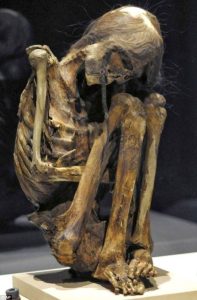
The Discovery at Pachacamac
The mummy was found in a carefully constructed burial chamber, indicative of the reverence and significance placed on death and the afterlife by the inhabitants of Pachacamac. Wrapped in layers of textiles, a common practice among the Andean cultures to honor the dead, she was accompanied by offerings that suggest her high status in society. This burial site, a testament to the intricate burial customs, stands as a powerful reminder of the complex belief systems that guided ancient societies.
For those interested in exploring the depth of this discovery, images of the mummy and her burial site provide a profound visual journey into the past, revealing the meticulous care with which she was laid to rest and the rich cultural traditions of the Pachacamac settlement.
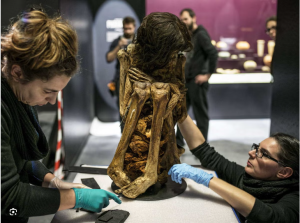
Understanding Ancient Pachacamac
Pachacamac was a significant religious and administrative center, playing a crucial role in the pre-Columbian history of Peru. The discovery of the mummy adds a valuable layer to our understanding of the site’s significance. It highlights the role of women in their society and the spiritual practices that defined the lives of the Pachacamac people. Through careful examination of the burial goods and the mummy itself, researchers can glean information about the diet, health, and even the social hierarchy of the time, offering a comprehensive picture of life in ancient Pachacamac.
The woman from Pachacamac serves as a bridge connecting us to the distant past, offering insights into the daily lives, religious practices, and societal structures of ancient civilizations. Her mummified remains tell a story of a community that valued its members in life and in death, showcasing the complexity and depth of their cultural practices. This discovery prompts readers to reflect on the continuity of human experience and the universal aspects of honoring the deceased.
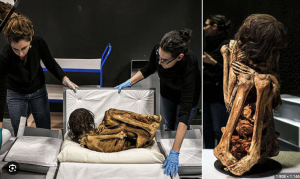
Preserving the Legacy of the Ancients
The preservation of the mummy from Pachacamac underscores the broader challenges faced in protecting antiquities worldwide. Such discoveries are invaluable, not only for the historical and cultural insights they provide but also for their contribution to the collective heritage of humanity. The protection of these sites and artifacts against looting, environmental hazards, and the impacts of modernization is critical. By supporting archaeological research and advocating for the conservation of historical sites, we play an active role in safeguarding our shared past.
Efforts to preserve antiquities like the Pachacamac mummy involve meticulous conservation techniques and international cooperation to ensure that these treasures can continue to teach and inspire future generations. The story of the mummy serves as a poignant reminder of the importance of respecting and protecting our global heritage, allowing us to connect with the civilizations that have shaped our world.
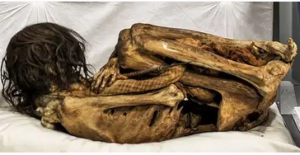
In conclusion, the mummy discovered in Pachacamac offers a fascinating glimpse into the ancient world, highlighting the complex rituals and rich cultural life of the past. As we delve into these ancient stories, let us also commit to the protection of these invaluable remnants of history. By preserving the legacy of the ancients, we keep the flame of human civilization alight, illuminating the path for those who will follow in our footsteps.
